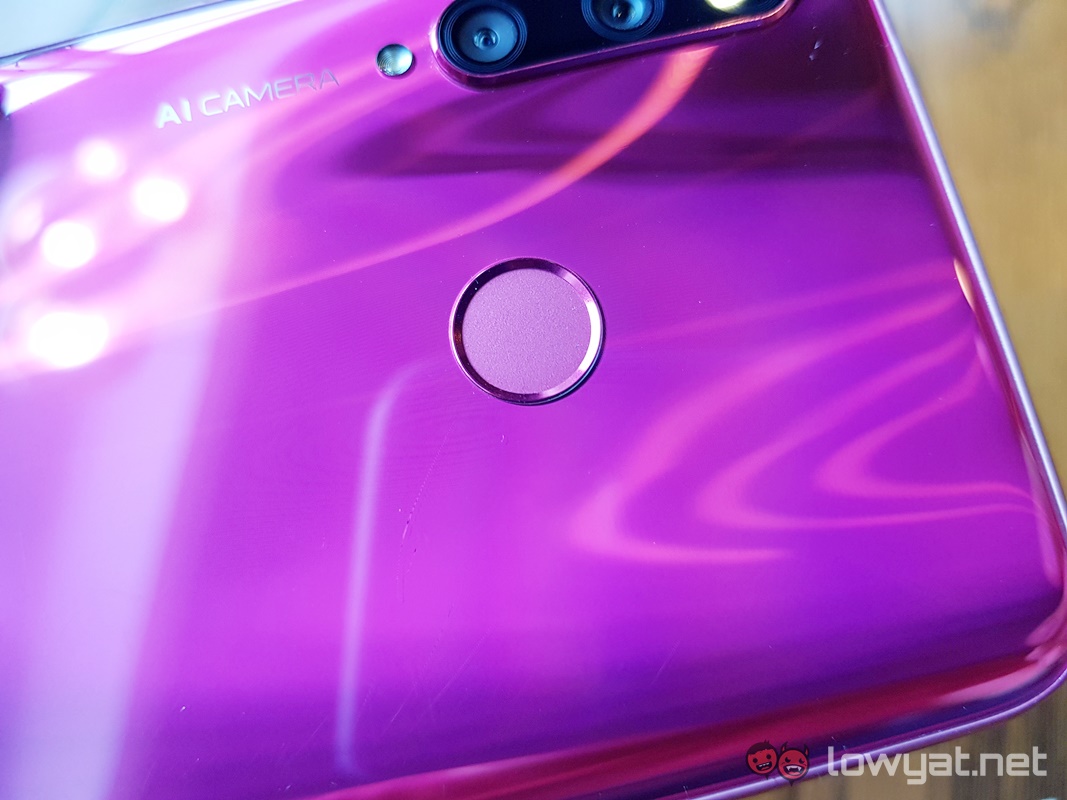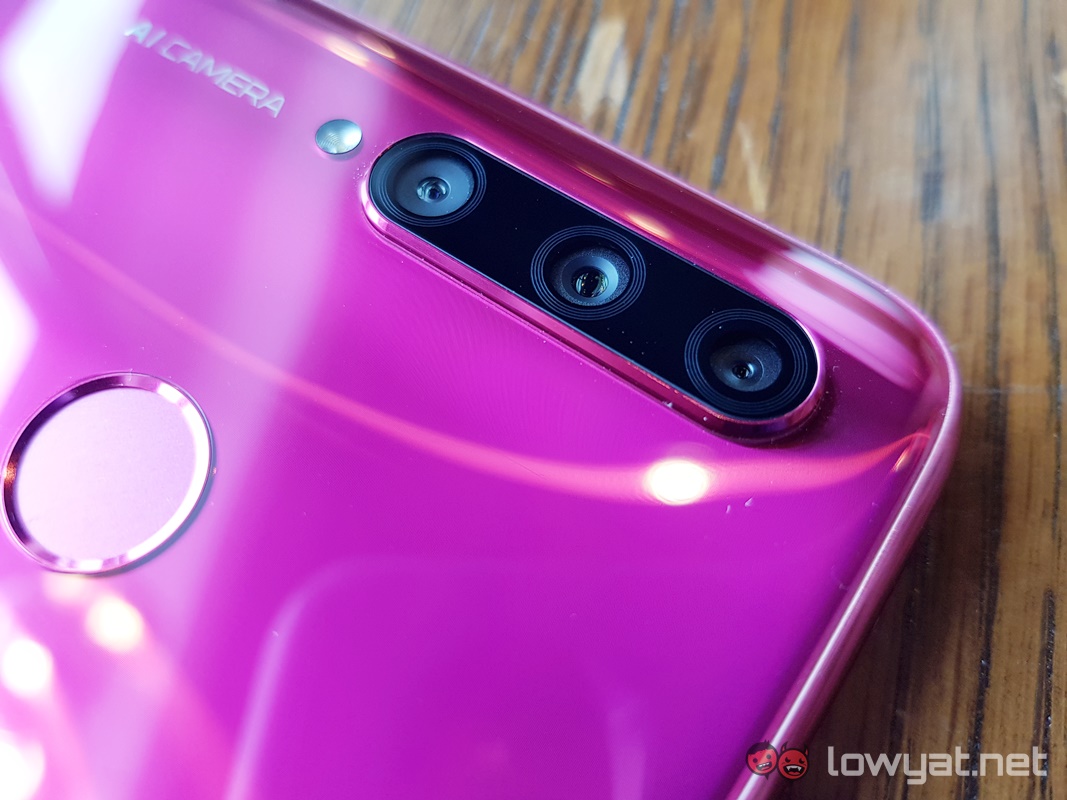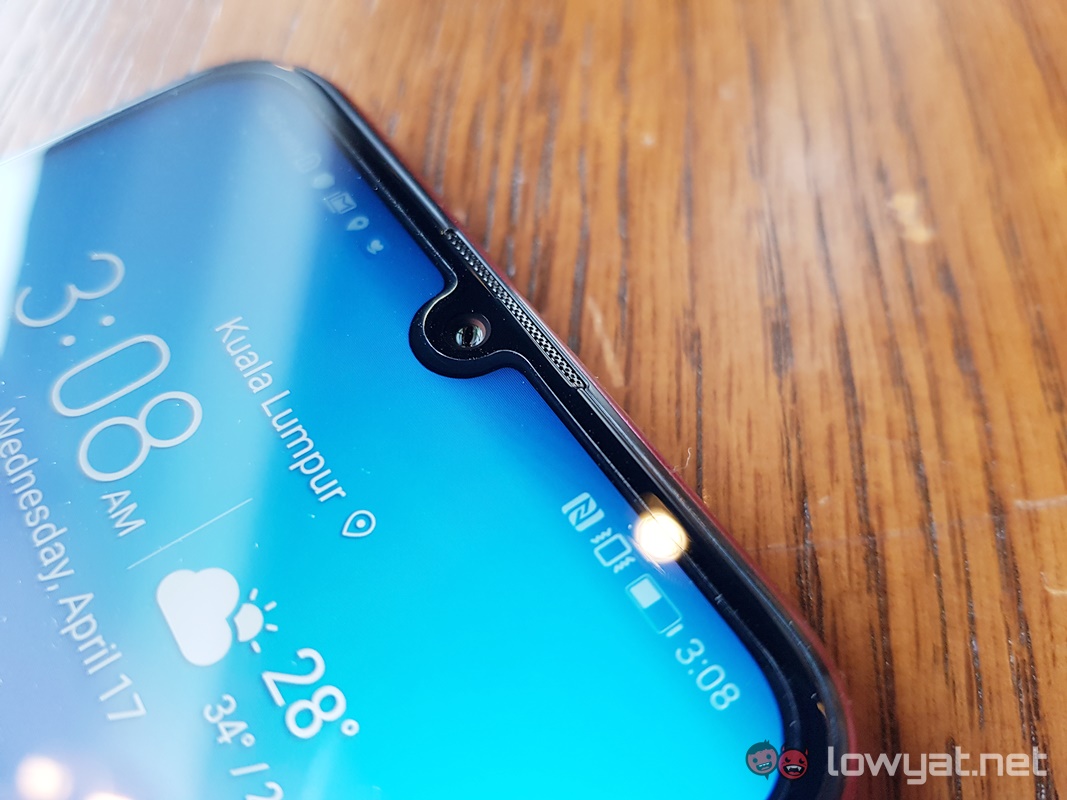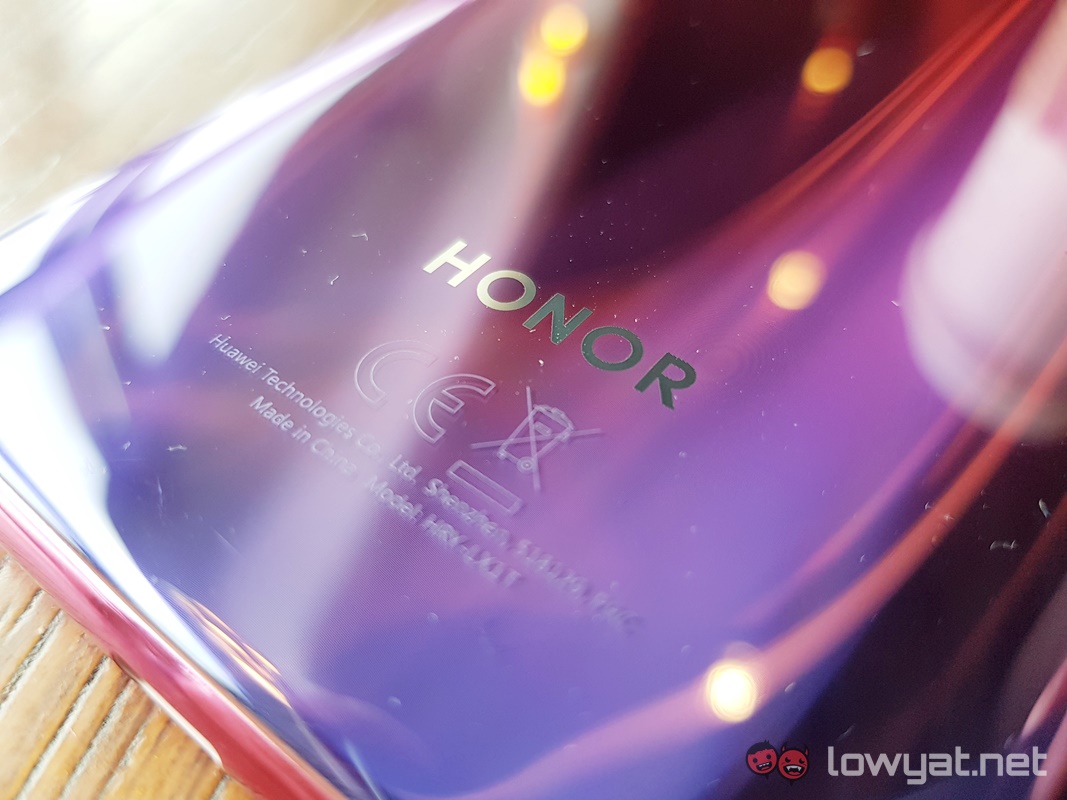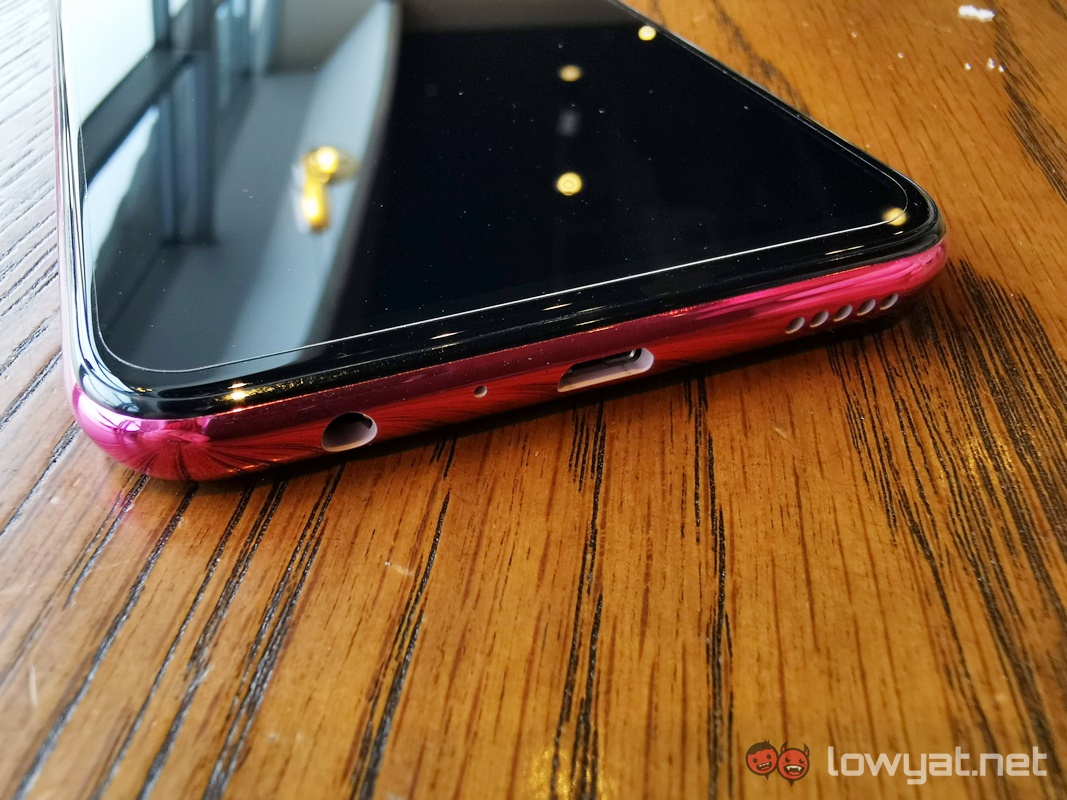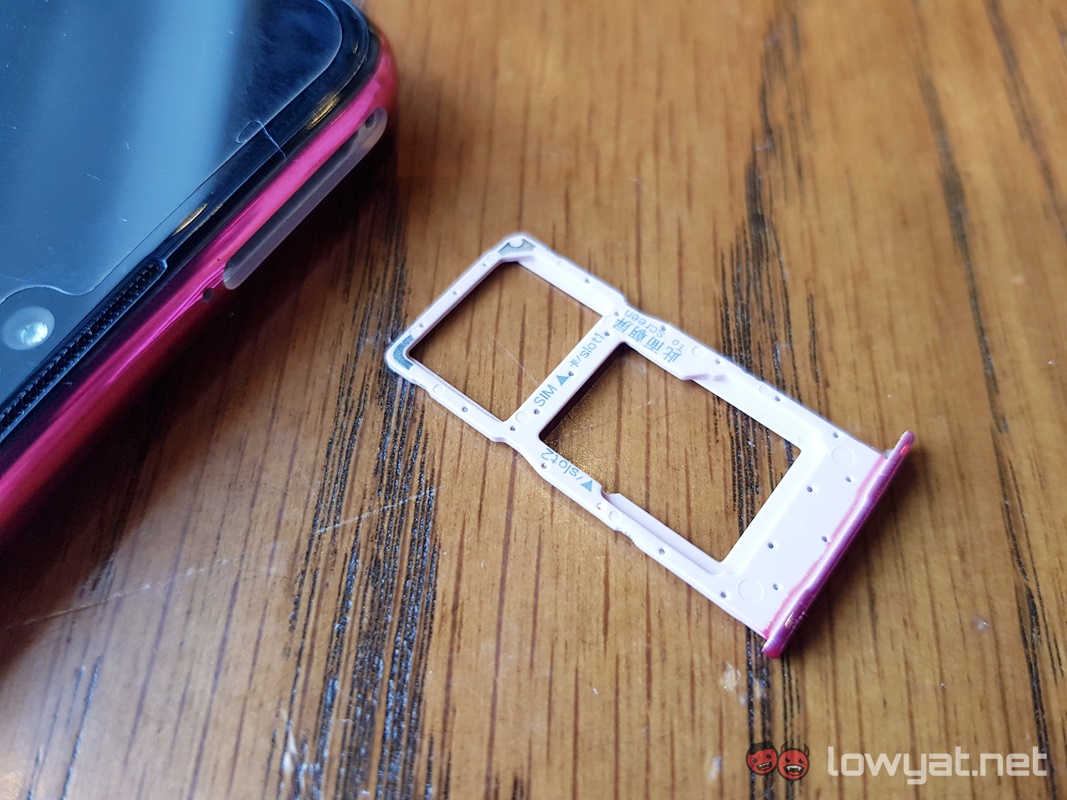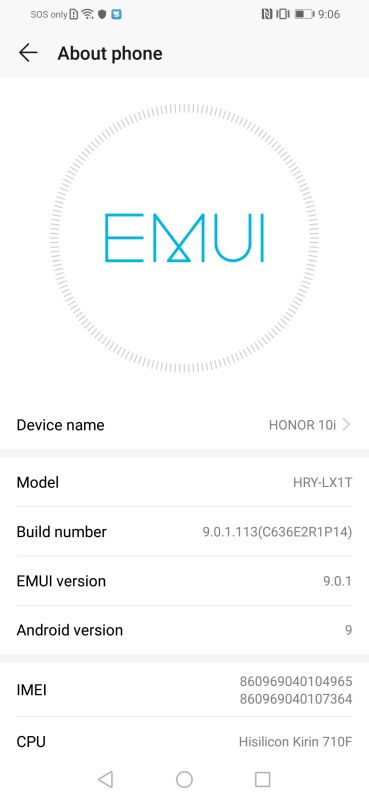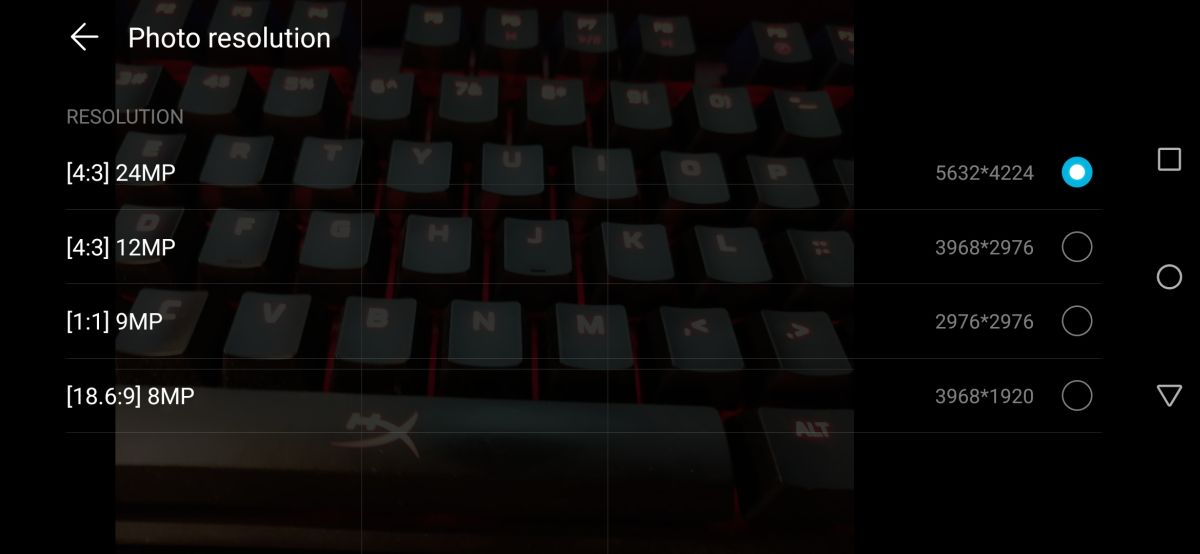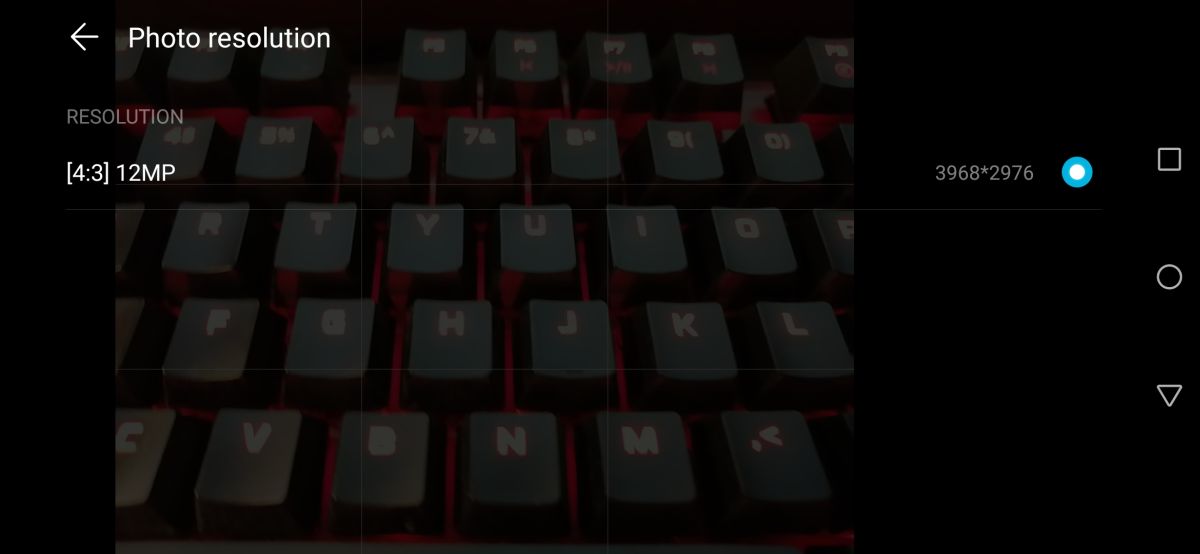It’s namesake notwithstanding, the Honor 20 Lite’s design doesn’t really deviate very far from HONOR 10 series. At the front, you get same 6.21-inch Full HD+ display as the HONOR 10 Lite, complete with the same dewdrop notch situated right in the middle of the top bezel. The story’s the same over around the back; you get the same glossy, glass back and dual-tone colour designs. Following right behind is that dreadful – if not horrid – fingerprint magnetism that’s part and parcel of such a reflective material.
Of course, there are some noticeable, yet subtle differences. Instead of a dual-camera setup, the Honor 20 Lite comes equipped with a triple camera main array. Comprising a 24MP f/1.8 PDAF main sensor, and 8MP f/2.2 ultra-wide sensor, and 2MP f/2.4 depth sensor. The front-facing camera uses a 32MP f/20 sensor, and like all HONOR smartphones launched within the last year, both cameras on the HONOR 20 Lite have access to the on-board AI camera.
Even the fingerprint sensor of the HONOR 20 Lite is in the same place as the HONOR 10 Lite. In fact, the only other difference between the two phones is the logo design; the HONOR 20 Lite sports the more recent, block letter font.
Hardware-wise, the story is yet again, a familiar one. Beneath the hood, the HONOR 20 Lite is rocking Huawei’s mid-range Kirin 710 SoC, 4GB RAM instead of 6GB, and a 3400mAh non-removable battery. HONOR has also been pretty generous with storage, giving the phone a 128GB capacity. If for whatever reason, that amount isn’t sufficient, it can be expanded via the onboard microSD card slot, and by an additional 512GB too. Connectivity is handled via the micro USB port located at the base of the phone. There’s also a 3.5mm headphone jack for the audiophiles, although the HONOR 20 Lite’s on-board audio chip is anything to shout about.
On the software front, the HONOR 20 Lite runs on Huawei’s most current version of EMUI, on top of Android 9 Pie. I find it a bit odd that HONOR chose not to standardise its Magic UI across all its device. Instead, choosing to reserve that part of its identity for its more premium View series, and quite possibly any high-end HONOR 20 series device in the immediate future. Software lag is present, although only on occasion and only if the auto-update function is left to its own devices. One very minor detail I noticed about the phone’s software; if you head into the system software tab, and you’ll find that – despite the name change – it still lists down the phone as the HONOR 10i, instead of the HONOR 20 Lite. Moving forward, the main triple camera system is yet another oddity to me. Everything about it feels foreign to me; the maximum resolution of the camera is 24MP, but you can’t use the AI camera at the same time. Activating the AI camera automatically cuts that resolution by half and, to no one’s surprise, causes images to have that slightly washed out, smudged effect to its overall quality.
Another quirk on the HONOR 20 Lite’s camera system is that the HDR function is still not an “always-on” feature (with the option to turn it off), and is instead relegated to the “More” section of the interface.
It’s clear that the HONOR 20 Lite was made to go up against Samsung mid-range and triple-camera Galaxy A7 smartphone, and even has the hardware to back it up. Even so, we’ll still need to put the phone through its pace in a full review in order to find out just how much bang for your buck you’re getting with the phone.
